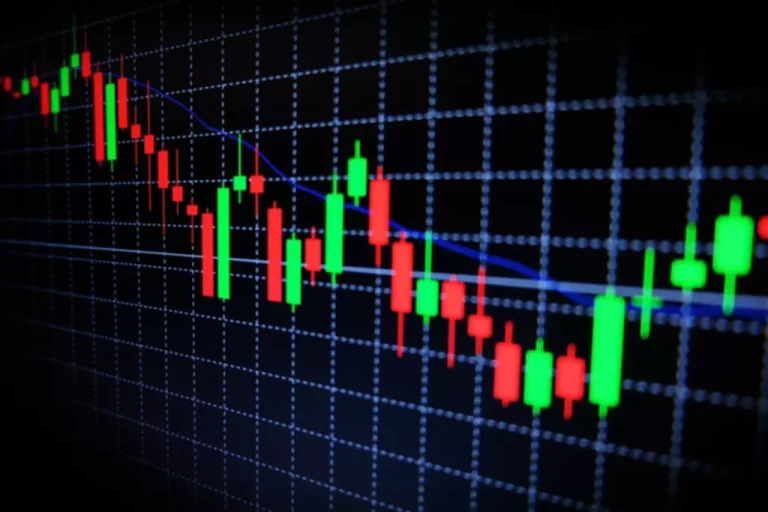Small-capitalization companies could also be much less secure and more prone to opposed developments, and their securities could also be extra unstable and less liquid than larger capitalization companies. Like shares, ETFs could be traded on exchanges and have distinctive ticker symbols that allow you to observe their price activity. Unlike shares, which symbolize just one firm, ETFs characterize a basket of shares. Since ETFs include a quantity of etp vs etf assets, they could present better diversification than a single inventory.
What’s An Exchange-traded Fund (etf)?
Preferred Stock ETF (PFF), which holds a portfolio of various U.S. most well-liked shares. It has belongings of about $15 billion, an expense ratio of 0.46%, and five-year returns of 3.01%. These are funds that maintain a kind of stock that shares characteristics of both equity and debt devices. Preferred stocks come before common stocks for dividend funds and asset distribution in case of liquidation, however they often do not carry voting rights like common shares.
Get In Touch With A Financial Advisor
Bitcoin publicity is supplied through the ETF BITO, which invests in Bitcoin futures. This is considered a high-risk funding given the speculative and unstable nature. Investments in Bitcoin ETFs will not be appropriate for all buyers and may solely be utilized by those who understand and accept these dangers. Investors looking for direct publicity to the value of bitcoin should consider a unique investment. Actively managed ETFs have fund managers making selections about which assets to include in the portfolio, rather than merely focusing on an index of securities.
Real Property Investment Trust (reit) Etfs
- The AP then sells these shares back to the ETF sponsor in change for individual inventory shares that the AP can sell on the open market.
- Foreign change ETFs purchase currencies of 1 nation or even an entire area.
- Investing in worldwide stocks and bonds might help traders cut back danger and doubtlessly expose them to development opportunities not out there in U.S.-only portfolios.
- The ease of buying and selling ETFs provides investors more control over when and the way they trade.
- They’re normally passively managed, which means they search solely to match the underlying benchmark index.
Carefully consider the Funds’ funding goals, risk components, and charges and bills before investing. This and different info may be discovered within the Funds’ prospectuses or, if available, the abstract prospectuses, which can be obtained by visiting the iShares Fund and BlackRock Fund prospectus pages. ETFs provide access to a wide range of investment choices, masking a broad vary of asset classes, sectors and geographies. ETFs are broadly obtainable fee free on most on-line brokerage accounts and thru investment professionals. You can also purchase immediately via Fidelity, the place iShares ETFs commerce commission-free online.
Discover Wealth Management Options Close To You

When you spend money on an ETF, you acquire possession in a group of underlying belongings similar to stocks, bonds, and commodities. Because an ETF can comprise various varieties of belongings across asset courses, industries, or geographies, it can be a great way to diversify your portfolio. An ETF (exchange-traded fund) is an funding fund that trades on a stock trade. Investing in an ETF can add diversification, tax effectivity, and buying and selling flexibility to an investor’s portfolio.
Unlike mutual funds, ETFs trade like stocks and you can buy and promote them on inventory exchanges. There’s usually extra turnover inside a mutual fund (especially those which may be actively managed) relative to an ETF, and such buying and selling can lead to capital gains. Similarly, when buyers go to sell a mutual fund, the manager will need to raise money by selling securities, which also can accrue capital positive aspects.
If gaining broad market publicity stays the primary focus of ETFs for 73% of users in 2019, 52% of respondents will use ETFs to acquire specific sub-segment publicity. The range of ETFs will increase the chances of utilizing ETFs for tactical allocation. Investors can easily increase or lower their portfolio publicity to a specific style, sector, or factor at a lower price with ETFs. The extra risky the markets are, the extra attention-grabbing it’s to use low-cost instruments for tactical allocation, especially since cost is a serious criterion for choosing an ETF supplier for 88% of respondents.
The distinction of being the primary exchange-traded fund (ETF) is usually given to the SPDR S&P 500 ETF (SPY) launched by State Street Global Advisors on Jan. 22, 1993. There were, nevertheless, some precursors to the SPY, notably securities called Index Participation Units listed on the Toronto Stock Exchange (TSX) that tracked the Toronto 35 Index that appeared in 1990. Some ETFs observe an index of stocks, thus making a broad portfolio, while others goal specific industries. By integrating research-backed investing, HDFC SKY permits traders to make more informed choices.
Similar to conventional index mutual funds, most ETFs attempt to track an index, such as the S&P 500. An index ETF solely buys and sells stocks when its benchmark index does. Big funding moves—like when a company is faraway from the index completely—happen very rarely.
You’ve probably realized that preserving fees low is a big driver of successful investing. And whereas that’s important, taxes may be more dangerous to long-term returns than fund administration fees. When it comes to proudly owning ETFs, a key factor to consider is the Total Expense Ratio (TER), which represents the total cost of holding an ETF for one 12 months. These costs consist primarily of administration fees and additional fund expenses, such as buying and selling charges, authorized fees, auditor fees, and different operational expenses. Generally speaking, ETFs have lower charges than mutual funds — and this may be a huge part of their appeal.

The point is, ETFs give you the flexibility to be any type of investor that you simply want to be. Bond ETFs, also referred to as fixed-income ETFs, can present buyers entry to 1000’s of bonds in a single trade. Trading on exchanges provides larger liquidity, and transparency in pricing and execution, which may beneficial to buyers within the more opaque, over-the-counter bond markets. The U.S. inventory market is split into 11 sectors, and each is made up of firms that operate within that sector. Sector ETFs provide a approach to invest in specific corporations within those sectors, such because the health care, monetary or industrial sectors.
Commodity costs are typically not highly correlated to costs for stocks and bonds; furthermore, commodity sectors typically have a low correlation to every other. For these reasons investors usually use exposure to commodities as a means to assist diversify their portfolios, and to align with their views on inflation and the financial outlook. Commodity ETFs offer convenient, inexpensive access to particular person commodities such as gold or silver, and exposure to broader units of commodities, such as power or agriculture. Most ETFs are passively managed investments; they merely monitor an index. Some buyers prefer the hands-on method of mutual funds, which are run by knowledgeable manager who tries to outperform the market.
Sector ETFs provide investors publicity to a basket of firms in specific industries similar to expertise, energy or healthcare. Certain conventional mutual funds could be tax efficient and, of course, ETF shareholders can incur tax penalties after they sell shares on the exchange, but that tax consequence is not passed on to different ETF shareholders. In addition, traders purchase and sell ETF shares with other investors on an trade. As a end result, the ETF supervisor does not have to sell holdings — doubtlessly creating capital features — to meet investor redemptions. Mutual fund shareholders, however, redeem shares instantly from the fund. The fund supervisor must typically sell fund securities to honor redemptions, potentially triggering capital gains which then trickle right down to the fund’s traders.
Acorns shoppers might not experience compound returns and funding results will vary based on market volatility and fluctuating costs. ETF suppliers deduct investment management charges from the value of the fund. Because these funds are handled in-house, investors don’t see these fees on their account statements. Investors should evaluate the ETF’s prospectus or other offering paperwork for full breakdown of charges.
Read more about https://www.xcritical.in/ here.